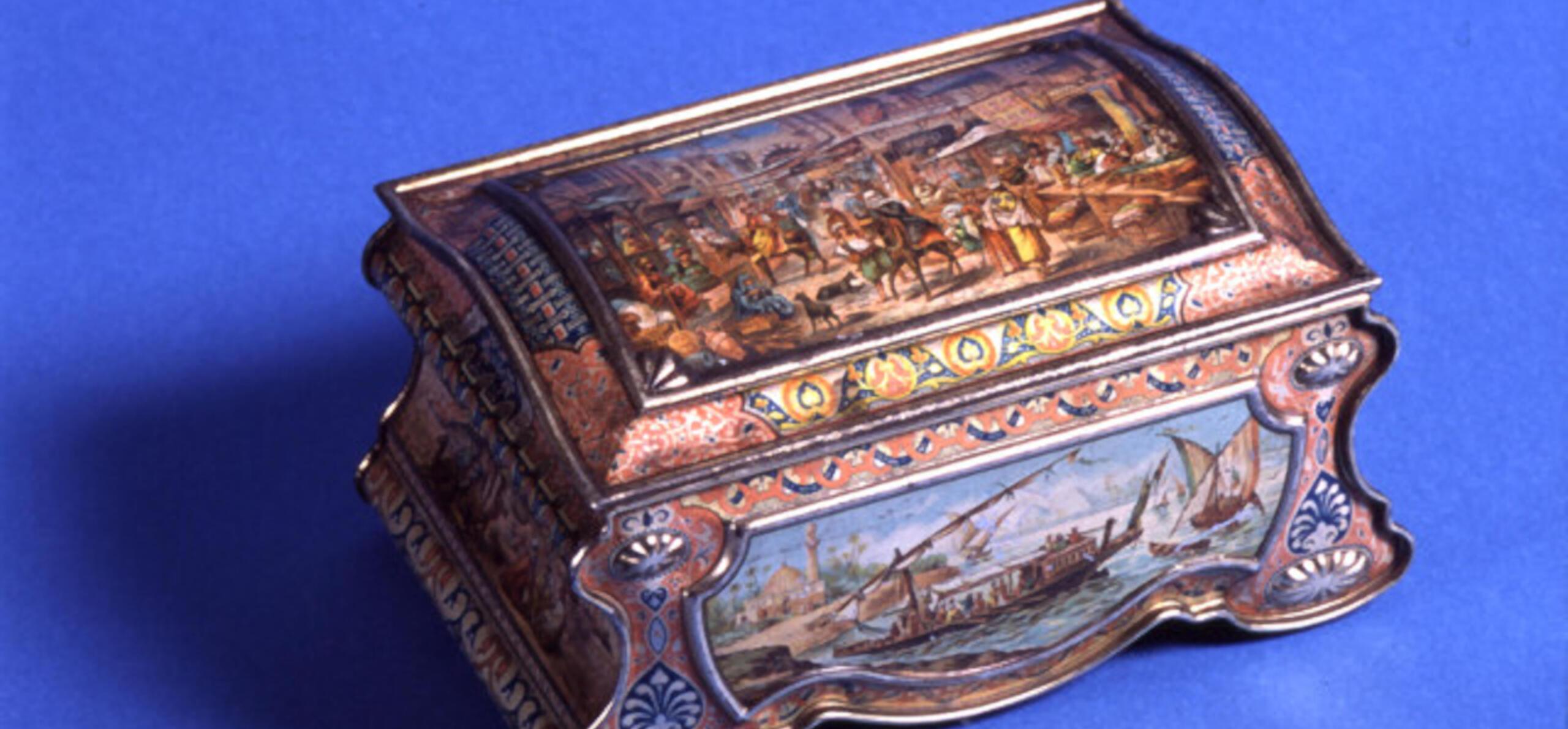Biscuit tin design changed significantly between the 1860s and the First World War. Learn about these developments below, including the first tins using the transfer printing method, designs inspired by the royal family and the empire, and the twentieth century fashion for biscuit tins that imitated other objects.
Child and dog, 1870
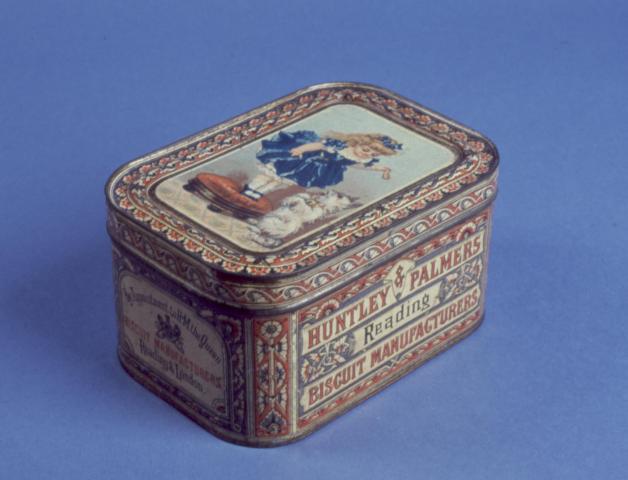
Manufactured by Huntley & Boorne (before Stevens became a partner in 1872), this was one of the earliest decorated tins. It has 'by appointment to H.M Queen' written on the side, after Huntley & Palmers became royal suppliers in 1867. (REDMG : 1992.2.5)
This 'Child and dog' tin was printed via the transfer method, which became popular in the 1860s. First the picture was printed on porous gummed paper and then pressed onto the flat tin plate. Once the picture was dry, the paper was soaked, wiped off and the tin plate was baked in an oven. The design printed on the tin plate would show the tin-maker where the edge of the tin was meant to be.
'Speciality' small tin, 1870s

This tin forms part of a set of 'Speciality' tins issued in the 1870s. These early tins were of a rectangular shape and usually combined several colours in simple pattern designs incorporating the royal coat-of-arms. (REDMG : 1992.2.12)
Seasons, 1885
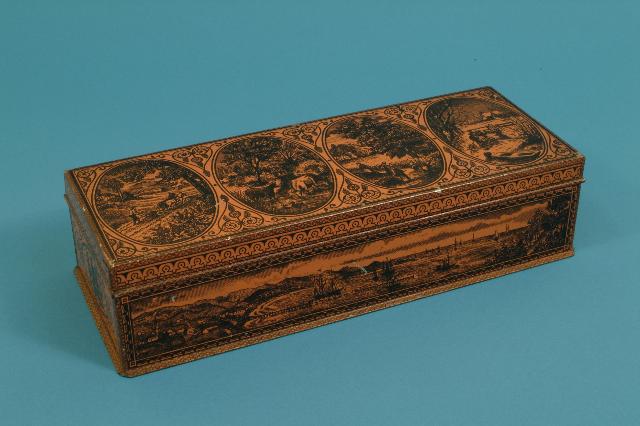
A rectangular tin in orange-gold and black with scenes of the four seasons on a hinged lid and seascapes around the sides. The Huntley & Palmers motif appears on the side and their stamp on the base. (REDMG : 1992.2.34)
In the 1870s Huntley Boorne & Stevens had acquired the right to an offset lithographic printing process, then owned by matchmakers Bryant & May. The design was first printed on to flat, glazed cardboard and then offset onto the tinplate. This tin was printed by that method and is one of a set of several 'Seasons' tins produced that year in various colours.
Golden Jubilee, 1887
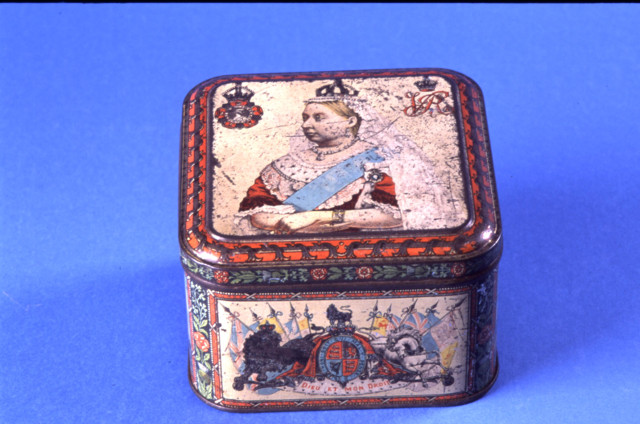
The royal family were often featured on Huntley & Palmers biscuit tins, and tin manufacturers rarely missed the commercial opportunity presented by a royal occasion. This tin commemorates Queen Victoria's Golden Jubilee in 1887. (REDMG : 1992.2.38)
Shamrock, 1898
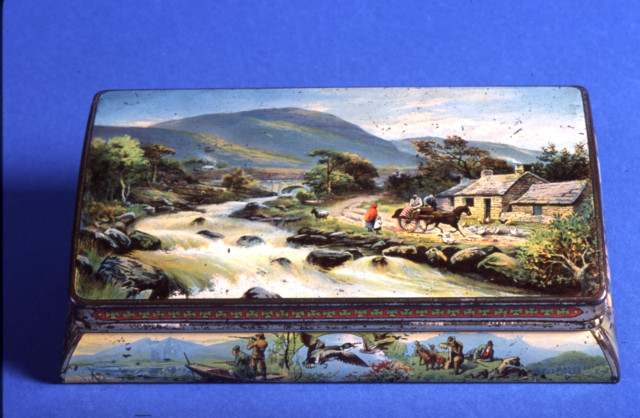
The top of the hinged lid depicts an Irish country scene, while the sides feature shamrocks, one of the symbols of Ireland. (REDMG : 1992.2.92)
Levant, 1900
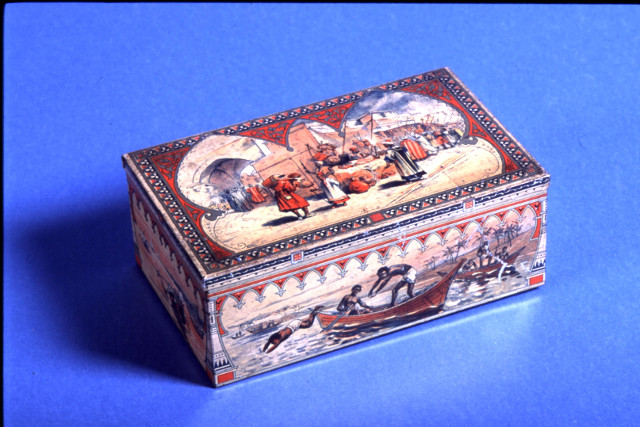
By 1900 Huntley & Palmers were exporting their biscuits globally, and many tin designs were influenced by eastern culture. For the purchasers of the tins, the designs gave them a flavour of countries they would probably never visit. (REDMG : 1992.2.102)
Syrian, 1903

The second tin issued in the shape of a table after 'Cairo' in 1902, appearing as carved wood inlaid with ivory. It reflects early attempts to produce disguised tins. An arrow on the side of the lid indicates where to open it. (REDMG : 1992.2.130)
Japanese casket, 1908
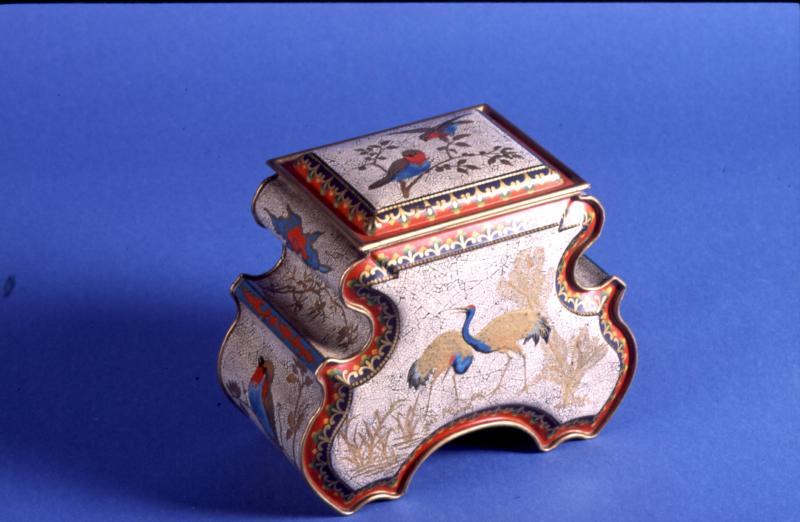
Designing new shapes for the tins was time-consuming and costly, so Huntley & Palmers often reused shapes with different designs. First used in 1893, this Japanese Casket was the last use of this particular shape. (REDMG : 1982.101.9)
Glazed china cabinet, 1912
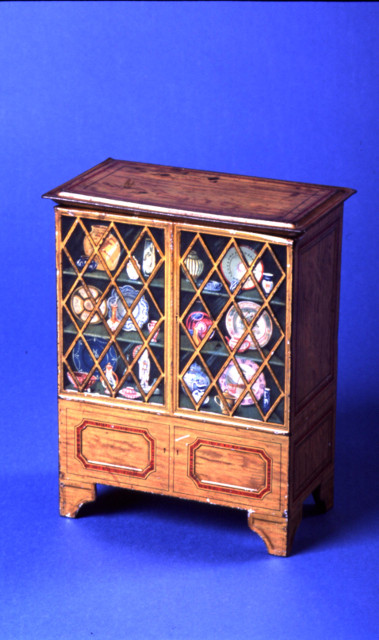
From the late nineteenth century, Huntley & Palmers issued tins shaped as actual objects. The initial popularity with consumers of handbag- and book-shaped tins led to more adventurous designs such as this simulated wooden cabinet. (REDMG : 1982.101.12)
Continue learning about Huntley & Palmers' tins and advertising.
